
Project News
How we make our Soils for use in Aquaponics – Sahib Aquaponics Urban Research Farm
Following my initial article on Nov 19, 2012 and the follow up on Dec 10, 2012 re using soil in Aquaponics, I have received numerous requests for sharing how we make our own soil. We cover this in some detail in our workshops and provide numerous possibilities. In this article, I am going to share with you two of Sahib’s soil mixes, one for seed starting and one for the base potting soil. I have used these mixes for some years now and find that they vastly increase the range of what we can grow in our organic sustainable hybrid Aquaponics systems.
This growing method gives me the possibility of adding side dressing of organic based natural fertilizers (such as Bat Guano and Manganese Sulfate – Epsom salts), from the top for those plants requiring such. This enables me to control the nutrient requirements of the numerous vegetables on an individual basis. I hope that what I am doing and my style of Hybrid Urban Aquaponics will help you grow your own food locally, naturally and without the need of harmful pesticides and chemical fertilizers
Why make our own soil?
I find that most commercial potting soils contain non-organic synthetic chemical fertilizers and other ingredients that I do not want to use in my Aquaponics systems. Those that are certified organic (ORMI Listed – The Organic Materials Review Institute), usually tend to be pretty expensive. The main components of the potting soils tend to be Coir, Peat Moss, Perlite, Vermiculite and Compost. By purchasing the individual components separately I can make my own soil mix(s), that are Organic and suitable for my Aquaponics systems – soil that will not kill my fish!
Note: All mixes will be for a 5-gallon container – adjust accordingly to your needs. See below for photos of various products.
Sahib’s Seedling Soil Mix:
3.5 gallons Coir
1 gallons coarse Vermiculite
0.5 gallons Worm Castings (Vermicast)
Mix well and use in seedling containers to germinate your seeds. Once you have transplanted the seedlings, empty the remaining used seedling mix into your Worm Compost Bin or Sahib’s Base Soil Mix.
Sahib’s Base Soil Mix:
2 gallons Coir
1 gallon Peat Humus
0.5-gallon coarse Perlite
0.5 gallon aged pine fines
1 gallons Worm Castings (Vermicast)
Soil Amendments & Fertilizers added to this base mix (all organic and where possible, fish based):
1/3 cups – Bone Meal, Blood Meal, Kelp Meal, Azomite, Dolomite, Epsom Salts, Prosperous, Rock Phosphate, Organic All Purpose Fertilizer such as Bio-Organic and Espoma Garden Tone.
Mix well and use in your choice of containers (article to follow). Top dress as required for the specific plants such as Espoma Tomato Tone for tomatoes. At the end of the growing cycle, I will clean the base mix by removing all dead roots (put them in Compost Bins), and then add this to a new mix (about 50 to 60% usually remains). This way, we are building our soil and retaining numerous micronutrients for better growth and increased fruit yields.
Please note that following photos are for illustration purposes only. I do not endorse or am I paid by any company for listing such. You should use organic products available in your area.
So here you have two of Sahib’s soil mixes. I do add some other soil amendments and feeding to maximize plant health and fruit growth – we teach such in our Aquaponics training Workshops. Hopefully, you can attend one of them. You are welcome to share your ideas, designs, experience and comments.
God bless,

Project News
Here is a post by Dave Hart, an experienced Aquapon who works with me at Sahib’s Urban Aquaponics Hybrid Research Farm. The lady at Lowe’s Dave refers to below is a Master Gardener and gives classes on Botany. She want to bring her class students and those of some of her Seminole County based Master Gardeners for a Farm Tour.
“This past Saturday, we were like a couple of drug dealers in the hood….  …but we were ‘pushing’ Aquaponics at a Lowe’s in Fern Park, FL.
…but we were ‘pushing’ Aquaponics at a Lowe’s in Fern Park, FL.
http://www.youtube.com/watch?v=AimrBCov5BY
Sahib goes into this one often and has gotten to know the folks in the garden dept. The lady that runs the dept asked if we would be interested in setting up an aquaponics display for their ‘100 days of spring.’
We got to talk about AP to lots of folks. I tried to mention DIY, to everyone I talked to. Hopefully, a little taste, has created some new ‘addicts’… 
On one end of the table, we had a small raft system set up. The pump was a little big, so I added a spray bar in the fish tank.
On the other end, we set up a small demo of a bell siphon. The stand pipe was pvc, but the ‘bell’, was part of a clear soda bottle. That way folks could see the siphon actually working.
In the 1st picture, the green pop up tent was the scotts vendors tent. Boy, did we get dirty looks when they heard us telling folks that with AP, you don’t need to buy fertilizers…. 


If you want to get the kid’s attention, just add a large gold fish or two. Lots of kids sat right there and watch them.
Hopefully, it’ll be a ‘seed’ for them, later on in life… 

_________________
“Freedom is never more than one generation away from extinction. We didn’t pass it to our children in the bloodstream. It must be fought for, protected, and handed on for them to do the same.” – President Ronald Reagan

Project News
Sahib Aquaponics: What shall we grow today?
Tomatoes – actually to be more precise – Heirloom Tomatoes
Let me tell you that I am just crazy about eating tomatoes – I mean real good quality tomatoes that actually have taste and flavor. I cannot usually find these in most supermarkets and if I do, they are quite pricey but still leave something lacking in flavor and taste, usually because they have been picked before they have had a chance to ripen and usually have sat in storage and coolers, probably shipped in from some far away place. There really is nothing better than local grown and vine ripened heirloom tomatoes so they have had time for the full flavor to develop. Growing tomatoes in Aquaponics is easy and ever one who has an Aquaponics System can certainly enjoy them fresh. However, to increase the taste and flavor of tomatoes grown in Aquaponics, I have concluded the following during my research over the last three years or so.
First and foremost, try to only grow “Heirloom” tomatoes. So what is “Heirloom”? Seeds of plants that have passed down by families over the years (usually over 50 years), and those that have preserved the unique taste, flavor and character are usually referred to as “Heirloom”, sometimes also called “open pollinated” or “Heritage” (in UK). The fruits may not all look uniform and be of different size and shapes. To those who are interested in actually tasting their food, these are sought after and command a higher market price. As awareness is growing of the associated additional health benefits of eating such food, their demand is on the rise. You as a grower can certainly benefit from this “Niche” section of the food market. Yes it will take time and patience to locate the consumers who will appreciate your unique “heirloom” produce grown locally and naturally. Let me assure you that once they have tasted the produce, they will not be going elsewhere and will become loyal customers so long as you continue to grow such wonderful tomatoes.
[column size=”1-3″ last=”0″ style=”0″] [/column][column size=”1-3″ last=”0″ style=”0″]
[/column][column size=”1-3″ last=”0″ style=”0″] [/column][column size=”1-3″ last=”1″ style=”0″]
[/column][column size=”1-3″ last=”1″ style=”0″] [/column]
[/column]
Growing heirloom tomatoes in Aquaponics to attain the full flavor and taste, I have found that the best results are obtained when I grow them in pots filled with my own “soil mix” and place them either in rafts or recirculating media wicking beds. This allows the tomato plants to always have the effluent rich re-circulating fish water that is high in Nitrogen as well as allow “top-side dressing” by adding very small amounts of natural and organic material such as vermicompost, high phosphorus bat guano, bone meal and rock salts such as Azomite. As there is not “top” watering other that the occasional spray of Vermicompost Tea, there is very little chance of any significant leaks of such into the Aquaponics System water so as to harm the fish. I have found that we have a significant increase in the fruit yield of each tomato plant as well as enhanced taste and flavor. Yes there is one major disadvantage than growing regular tomatoes. These heirloom tomatoes require very careful handling. Many of them have thin skins and a short shelf life once picked. They are thus ideally suited to the small urban farmer serving the local customer – that would be you.
“Is it profitable?”
So what is the average selling price of a pound of Heirloom Tomatoes? I “goggled” this and came across a range from $1.00 to a high of $5.50, the average being $3.50. I was recently informed of a nearby Hydroponic grower getting $7.50 per lb! Well it is early in the tomato season. You can command a higher price at either end of the season as other local growers may not have the produce available for market – here a controlled environment such as a greenhouse /hoop house will certainly make economic sense. Growing them in Aquaponics can help you command 50c to $1.00 lb more especially if you can allow
”u-pick” as well as “mix & match” the varieties. The yield per plant varies depending upon the heirloom tomato plant variety and growing environment. In independent studies the range that has been seen is a low of 9lbs to a high of 19lbs. For our example we will use a low yield of only 14lbs per plant. You should space your heirloom tomato plants at least 15 to 18 inches apart if using a staggered raft formation and vertical trellising – ideally 2 feet if you have the space. If they are to be placed in re-circulating media beds I recommend a minimum of 2 ft distance in each direction and vertical trellising. You will have to keep ahead of the heavy leaf growth and may occasionally have to prune (be careful not to over do this), and ensure proper support of the vertical trellising. I try to mix and match the heirloom tomato varieties as some plants are more prolific than others. I must confess I also enjoy seeing the different colors of the various heirloom tomatoes. You also need to ensure that there is plenty of air circulation.
If you had a fifty foot long by 4 foot wide grow bed area (raft or media), so 200 sq. ft. space, and the heirloom plants were spaced at 2ft staggered, you should be able to plant at least 50 plants per growing season. Assuming that we receive an average of 14lbs heirloom tomatoes per plant and just the average price of $3.50 per lb, each growing season should provide you with a gross return of around $2,500. Now if you have a controlled growing environment, you may be able to command much higher prices at the start and out of the normal growing season. Here in Central Florida we experience at least two growing seasons, so could earn around $5,000 from the 200 sq foot of growing area allocated to heirloom tomatoes. In a controlled growing environment you may be able to stagger the planting so as to have virtually continuous growing thus substantially increase your revenue form the sale of heirloom tomatoes. Remember that you should grow multi crops to the niche market that you identify for your area and climate so as to maximize your revenues. There are other products you can grow in Aquaponics other than leafy greens and still make a profit – remember Okra, Eggplant, Hot Peppers, culinary herbs and so on.
[column size=”1-3″ last=”0″ style=”0″] [/column][column size=”1-3″ last=”0″ style=”0″][/column][column size=”1-3″ last=”1″ style=”0″]
[/column][column size=”1-3″ last=”0″ style=”0″][/column][column size=”1-3″ last=”1″ style=”0″]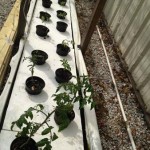 [/column]
[/column]
I have found the following web article on Heirloom Tomatoes to be helpful and am sharing it with you http://www.hobbyfarms.com/crops-and-gardening/heirloom-tomatoes-growing-selling.aspx
I will request my daughter to include some Heirloom Tomato recipes on her Blog www.lovelaughmirch.com
As to whether it is “profitable” from a health point of you, this is going to be your decision. Let me help you a little. Growing them by aquaponics means ensures that you are assured the best natural taste. As I was quoted in the recent article in Cornell University Small farm Program Newsletter – the Urban Gardening section “This was a far superior way to grow it locally, grow it naturally, without having to resort to harmful pesticides and fertilizers and such, because if I did, my fish would die.”
http://smallfarms.cornell.edu/2012/04/02/re-circulating-farms-growing-healthy-fresh-food-and-a-new-local-food-culture/
I have listed just some of the health benefits of eating heirloom tomatoes in the following link: http://jenubouka.hubpages.com/hub/Heirloom-Tomato-Beginners-Guide
In future “What shall we grow today?” article’s I will write about some of the vegetables and culinary herbs that you can grow in Aquaponics. Please let me know if there are any vegetables you would like to grow in Aquaponics and know more about them.
God bless

Project News
Sahib Aquaponics : What shall we grow today?
Okra – aka “Ladies Fingers”, “Kingombo”, “Gumbo” and “Bhindi”
During the last two years or so, I have found that you can grow almost any vegetable and plants that you choose to in Aquaponics. You may need to adapt the grow beds and practice hybrid aquaponics as I do to increase your range of products. I have successfully grown broccoli, carrots, eggplants, daikon and radishes, fennel, fruit trees, kohlrabi, herbs, okra, onions, pumpkins, marrows, gourds, tomatoes, strawberries, peppers – hot & sweet just to name some. I have also seen others grow corn and some even sweet potatoes via wicking beds. One really needs to expand their horizon and realize that there are really very few items that will not grow well in Aquaponics systems. Yes there are a few items that are just not cost effective at present such as grains and rice. There is research being done on these products and I am sure that very soon these too will become economic to grow via Aquaponics means.
Today I am going to write about one of my wife’s favorite items that we grow at Sahib Aquaponics, Okra. We call it by the Hindi/Urdu Name Bhindi. This much loved vegetable is a favorite of many and is usually grown in hot weather, one of the few that does not wilt and die as the temperatures rise. The green pods when cooked release a “goo” or slime which is considered by many to be beneficial to health. Okra can be eaten raw, boiled, fried, sautéed, stir fried, stuffed, and included in stews. The leaves can also be eaten, usually in salads.
Okra plants can grow up to 9 feet tall and with uncut Okra fruit, can weigh a lot hence they are not good candidates for “raft” Aquaponics. They are better suited to deep media beds preferably containing 3/4inch rocks. Grow them direct from seed and avoid the transplant shock. Although I have grown a hybrid variety from saved seeds, I do prefer to grow the “Clemson Spineless”. Each plant may only have one or two Okra pods maturing at any one time and you should pick these often. Try to pick the pods when they are 3 to 5 inches, although I must confess that in Aquaponics, they tend to grow that almost every day! If I forget to pick them for a couple of days, they have grown to 10 to 11 inches tall and fat as a cucumber. Hat is not always a good idea as letting them grow to a larger size tends to make them woody and lose their taste. My Aquaponically grown Okra are honestly the very best tasting “Bhindi” that I have ever eaten. When planting Okra you do need a lot of room as you should plant a number of plants if you would like to be able to harvest enough pods for a meal once or twice a week.
You can eat Okra right off the plants or cook them in numerous ways. They can also be frozen or pickled. You can cut them in ¼” to ½” pieces and stir fry then with onions and spices, or coat them with seasoned corn meal and deep fry them. They can be stuffed with spices, other stuffing or even cooked ground meat and then stir fried. Gumbo is another way to eat Okra. In order to get the maximum health benefits of Okra, try to avoid over cooking it and avoid deep frying. Okra is an excellent source of many nutrients such as Vitamin A, Vitamin B6, Vitamin C, Calcium, Copper, Iron, Potassium, Magnesium, Niacin, Zinc as well as containing Folic Acid. It is considered a weight loss food with optimum health benefits. The fibers found in Okra are supposed to help stabilize bold sugar, improve the functioning of the intestinal tract and help provide the body with good bacteria for the digestive system.
I have found the following web article on Okra to be helpful and am sharing it with you http://www.neurophys.wisc.edu/ravi/okra/ It also contains some recipes. I will request my daughter to include some Indian Bhindi recipes on her Blog www.lovelaughmirch.com
Okra!
“Is it profitable?”
In Pure Economics 101 terms, it all depends! If you live in very hot climates like Central Florida, your choice of produce to grow for market is limited during the hot summer. If you have the space and the appropriate Aquaponics set-up, growing Okra during the hot season and provide you with a stream of income that was non-existent during this hot period of the year. If you had a fifty foot long by 4 foot wide media filled grow bed area, so 200 sq. ft. space, you should be able to plant at least 120 plants – spacing them 12” to 15” apart. Once they start to produce fruit, you should be able to harvest approx. 30lbs to 40lbs weekly. Organic Okra, if available (and you know as you will hopefully educate your customer that Aquaponically grown is much superior), was selling for $2.99-$3.50/lb at the local farmer’s market. Say if you have a 20 week production harvest that could result in $3,000.00 plus additional income. Not as much as one could earn if growing tomatoes or green leafy veggies. However you could not grow them in this hot climate without some serious climate control environment! By the way, you can still grow basil, mint, hot peppers and gourds / melons in the open space of the media grow beds thus further add to you farm income.
As to whether it is “profitable” from a health point of you, this is going to be your decision. Let me help you a little. Growing them by aquaponics means ensures that you are assured the best natural taste. As I was quoted in the recent article in Cornell University Small farm Program Newsletter – the Urban Gardening section “This was a far superior way to grow it locally, grow it naturally, without having to resort to harmful pesticides and fertilizers and such, because if I did, my fish would die.” I have listed just some of the health benefits of Okra. Do you know, this is one vegetable that is so valued in Indian cuisine that had resulted in India becoming the largest grower of Okra. Ayurvedic medicine states numerous health benefits of eating Okra. Here is another link detailing information on Okra as a “Body Cleanser” http://www.ehow.com/about_5471466_information-okra-body-cleanser.html
In future “What shall we grow today?” article’s I will write about some of the vegetables mentioned above as well some other less known such as Bitter Melon (Kerela), Fenugreek (Methi), Malabar Spinach and Moringa (Drumsticks). Please let me know if there are any vegetables you would like to grow in Aquaponics and know more about them.
http://nutritiondata.self.com/facts/vegetables-and-vegetable-products/2497/2
God bless

Project News
Sahib Aquaponics – What shall we grow today?
Hot Peppers
A question that I am often asked is “Other than the lettuces and leafy greens, what else can you grow in Aquaponics?” That is then followed by, “Is it profitable?”
During the last two years or so, I have found that you can grow almost any vegetable and plants that you choose to in Aquaponics. You may need to adapt the grow beds and practice hybrid aquaponics as I do to increase your range of products. I have successfully grown broccoli, carrots, eggplants, daikon and radishes, fennel, fruit trees, kohlrabi, herbs, okra, onions, pumpkins, marrows, gourds, tomatoes, strawberries, peppers – hot & sweet just to name some. I have also seen others grow corn and some even sweet potatoes via wicking beds. One really needs to expand their horizon and realize that there are really very few items that will not grow well in Aquaponics systems. Yes there are a few items that are just not cost effective at present such as grains and rice. There is research being done on these products and I am sure that very soon these too will become economic to grow via Aquaponics means.

Today I am going to write about one of my favorite items that we grow at Sahib Aquaponics, part of the hot pepper family – Cayenne Peppers. In future posts I will write about other items that we successfully grow in our hybrid aquaponics systems and provide some information as to the benefits of consuming such and recipes of how we cook with them.
Cayenne Peppers!
“Is it profitable?” Really!
Let me answer the question “Is it profitable?” first in pure economics terms. According to recent articles (April 17, 2012), “The Top Ten Fastest-Growing Industries in America”, and and “The Hot Sauce Treadmill”, Hot Sauce Production is part of this group! I use a variety of chili peppers (also known as “Mirch” in India), especially Cayenne, in virtually all my cooking and will always have hot sauce handy. Today there are numerous hot sauces on display at various eating establishments. Just look at the supermarket isles when you next visit. This trend is expected to increase as our tastes change and adapt to more of an international cuisine and we build a tolerance to the capsaicin-rich foods. The market is expected to grow close to 5% annually, so yes, growing Hot Peppers can be economically profitable. Growing them by aquaponics means ensures that you are assured the best natural taste. As I was quoted in the recent article in Cornell University Small farm Program Newsletter – the Urban Gardening section “This was a far superior way to grow it locally, grow it naturally, without having to resort to harmful pesticides and fertilizers and such, because if I did, my fish would die.”
As to whether it is “profitable” from a health point of you, this is going to be your decision. Let me help you a little. I am sure that you are aware of the toxic effects of eating food that has been grown by using harmful pesticides and chemical fertilizers. Growing Chili peppers in Aquaponics, whether Cayenne or one of the other 400 varieties, eliminates the harmful pesticides or chemical fertilizers so prevents this source of toxins to your body. There is considerable research available to you as to the health benefits of eating chili peppers. Cayenne peppers are being used to cleanse and detoxify the digestion system, stimulate blood circulation as well as reduce & naturalize acidity in the body. They are considered to be anti-inflammatory and have “been used for a variety of diseases and ailments including heartburn, delirium, tremors, gout, paralysis, fever, dyspepsia, flatulence, sore throat, atonic dyspepsia, hemorrhoids, menorrhagia in women, nausea, tonsillitis, scarlet fever and diphtheria.” Dr. Edward Group -17 Health Benefits of Cayenne Pepper. They also have excellent nutritional value. “Red chilies contain high amounts of vitamin C and carotene (provitamin A). Yellow and especially green chilies (which are essentially unripe fruit) contain a considerably lower amount of both substances. In addition, peppers are a good source of most B vitamins, and vitamin B6 in particular. They are very high in potassium, magnesium, and iron. Their high vitamin C content can also substantially increase the uptake of non-heme iron from other ingredients in a meal, such as beans and grains.” Now you can see why chili peppers are considered as being an essential item in good health, part of the “Spice of Life” club.
I like the taste of Cayenne peppers so have a preference to using them often. We eat them fresh in salads or add them to my food (green or red), as well as dry them for use later, either as whole or powdered. Indian food just would not taste as good without adding chili peppers (mirch). My daughter has even named her food blog “Love Laugh Mirch”. Now I realize that eating chili’s can be difficult for many who have never had any hot spice added to their food. All I can suggest is, try to add a little hot sauce or fresh chili pepper (remove the seeds at first), to your food. You will soon really start to enjoy the sensation and crave for more. Pretty soon, you too will be advocating their use and growing as many of them as possible. Welcome on board
[nggallery id=10]
I was surprised to discover that chili peppers did not originate in India as Black Pepper (also known as “Black Gold”), but in the Americas. Christopher Columbus is credited as being one of the first Europeans to encounter them and called them “peppers” as they tasted spicy and hot, unlike any other food. He thought that he had reached India by sailing west in order to prove that earth was round. How the Chili Peppers travelled to India is still being debated, whether by Portuguese traders, Muslim merchants or Chinese silk merchants. Once they arrived in India, they were welcomed and became part of everyday food and being used in Ayurveda medicines.
In future “What shall we grow today?” article’s I will write about some of the vegetables mentioned above as well some other less known such as Bitter Melon (Kerela), Fenugreek (Methi) and Moringa (Drumsticks). Please let me know if there are any vegetables you would like to grow in Aquaponics and know more about them. You can contact me at sahib@sahibaquaponics.com.
God bless




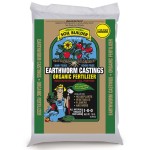



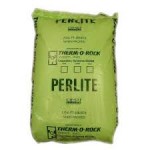






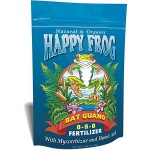
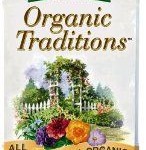



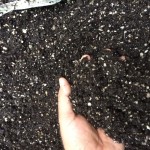
















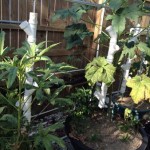


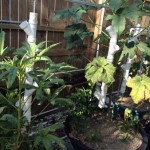


 Best Western Orlando East Inn & Suites
Best Western Orlando East Inn & Suites Crestwood Suites of Orlando-UCF Area
Crestwood Suites of Orlando-UCF Area Days Inn N Orlando/Casselberry
Days Inn N Orlando/Casselberry Park Plaza Hotel
Park Plaza Hotel Thurston House Bed and Breakfast
Thurston House Bed and Breakfast